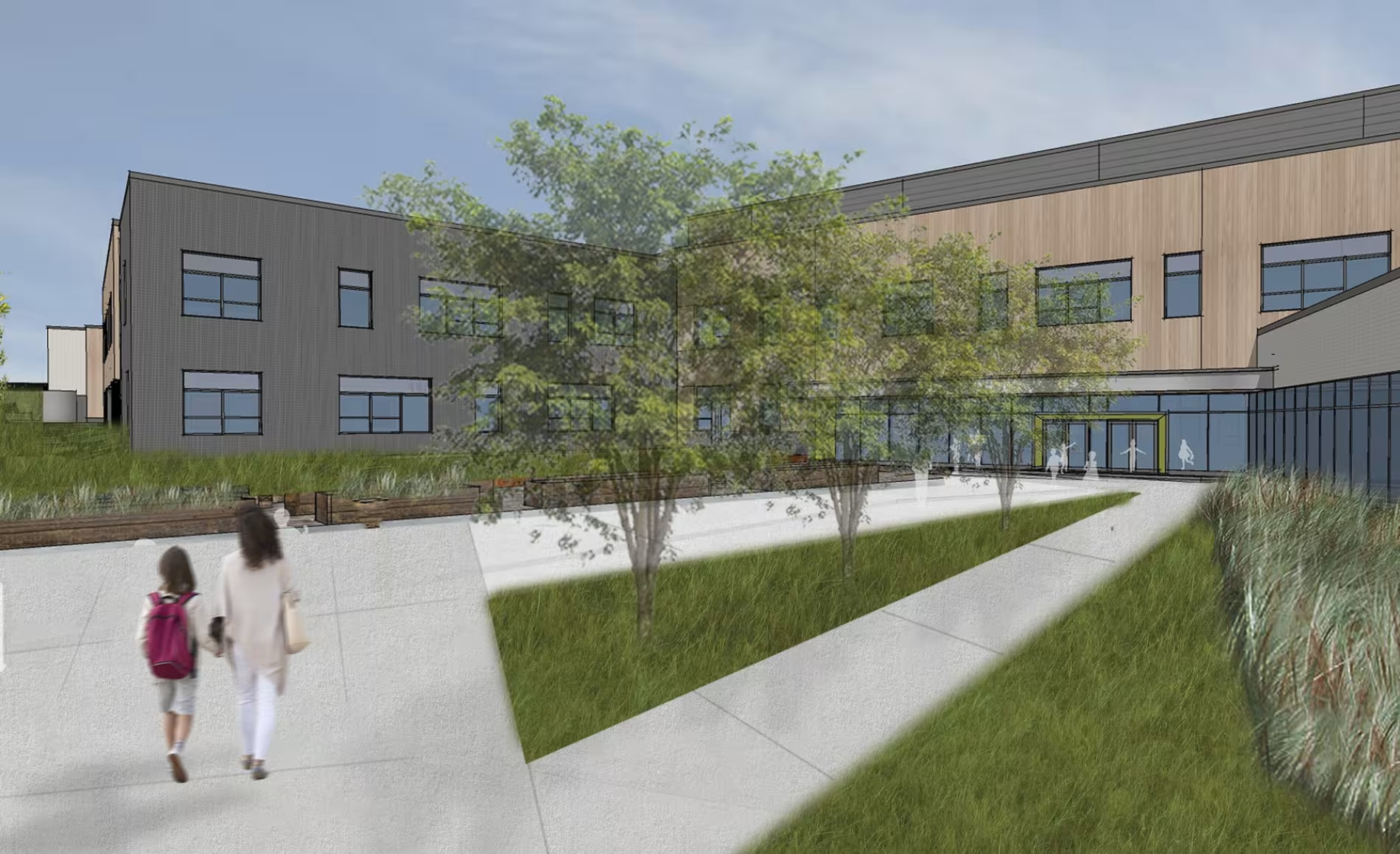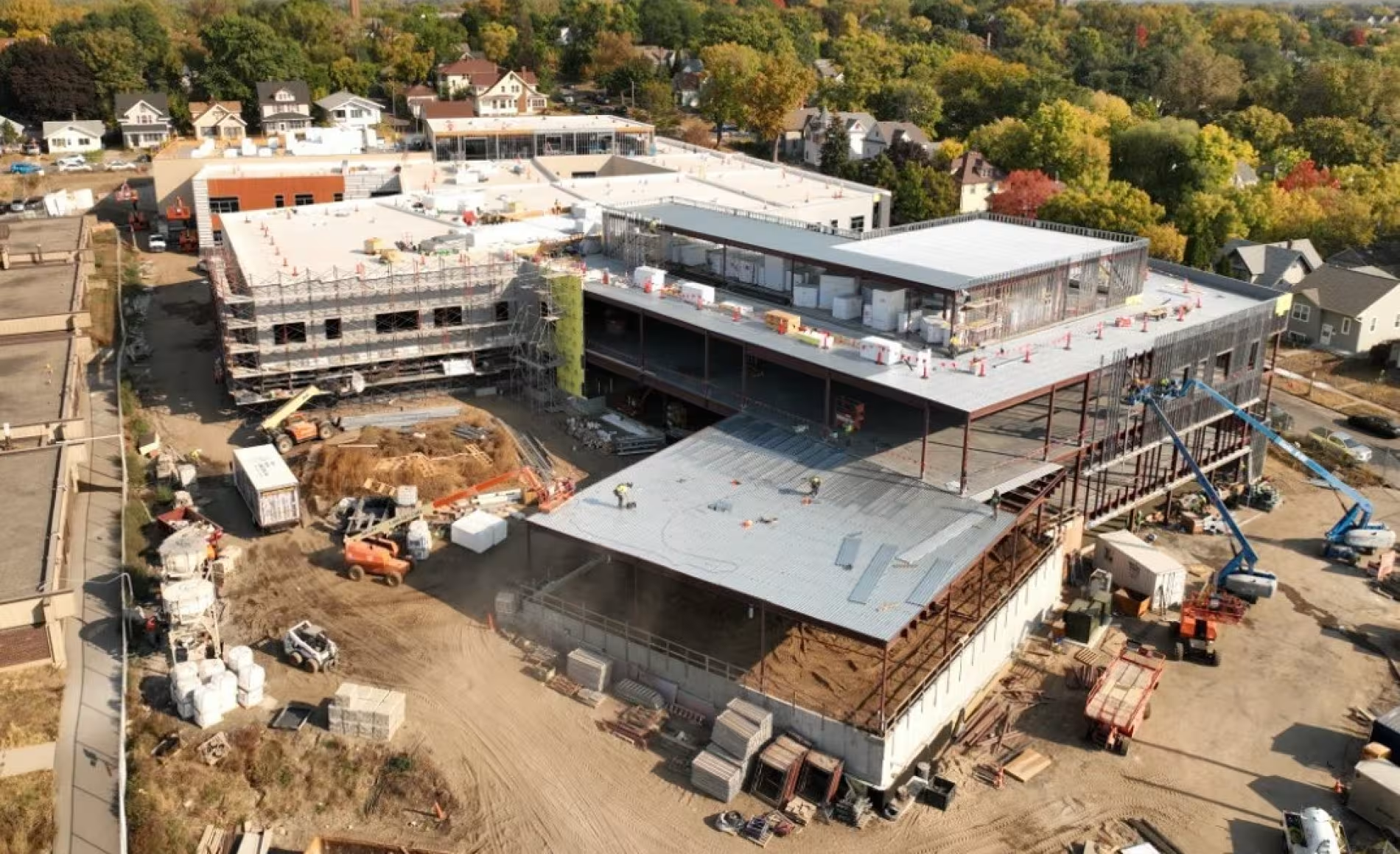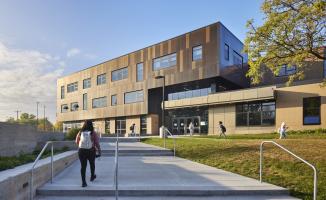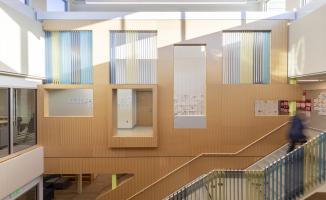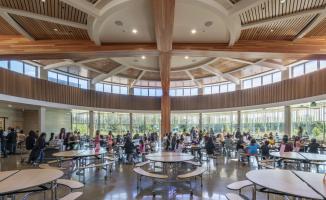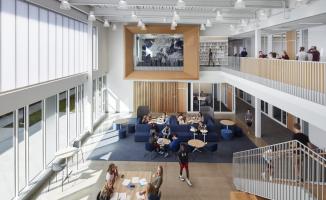Collaboratively Connecting Ecological and Social Well-Being at Bruce Vento Elementary
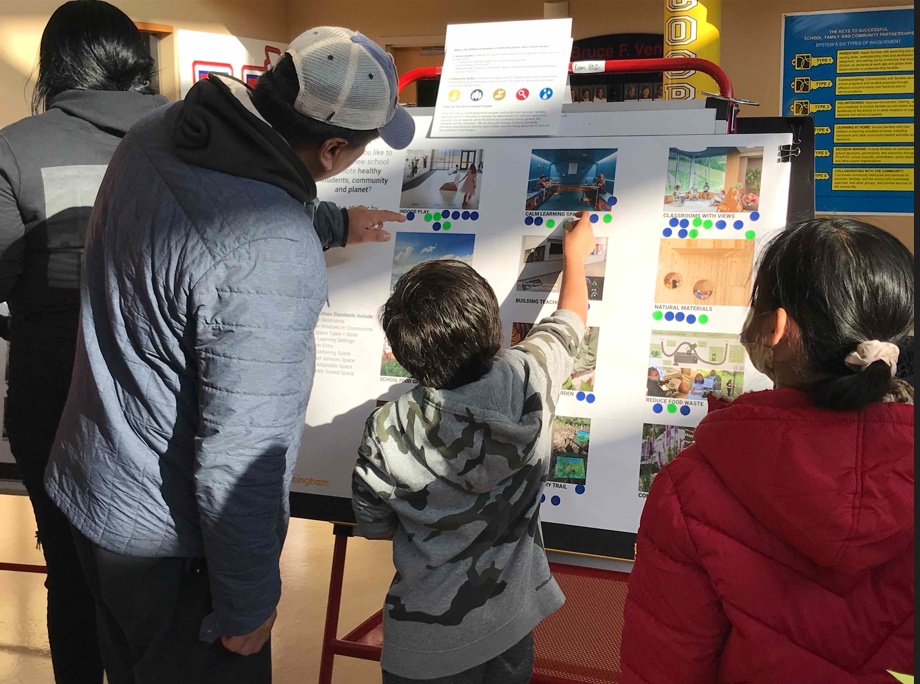
Bruce Vento Elementary in Saint Paul, Minnesota is setting a new precedent for centering students and community members in the regenerative design process. Working hand-in-hand with Saint Paul Public Schools (SPPS) students, teachers, faculty, and community members, Cuningham is shaping the new school’s development by understanding student and community priorities to create a regenerative design vision statement that focuses on broad, community needs, rather than specific design strategies.
Made possible through a long-standing and close-knit working relationship with the district, Cuningham’s workshop with the Bruce Vento community demonstrates how regenerative design strategies can be fine-tuned to reflect the unique needs of a school’s students, teachers, and community members — not just an add-on prescribed by architects. The result is a regenerative learning environment that makes play, connection to nature, and discovery foundational to the educational experience.

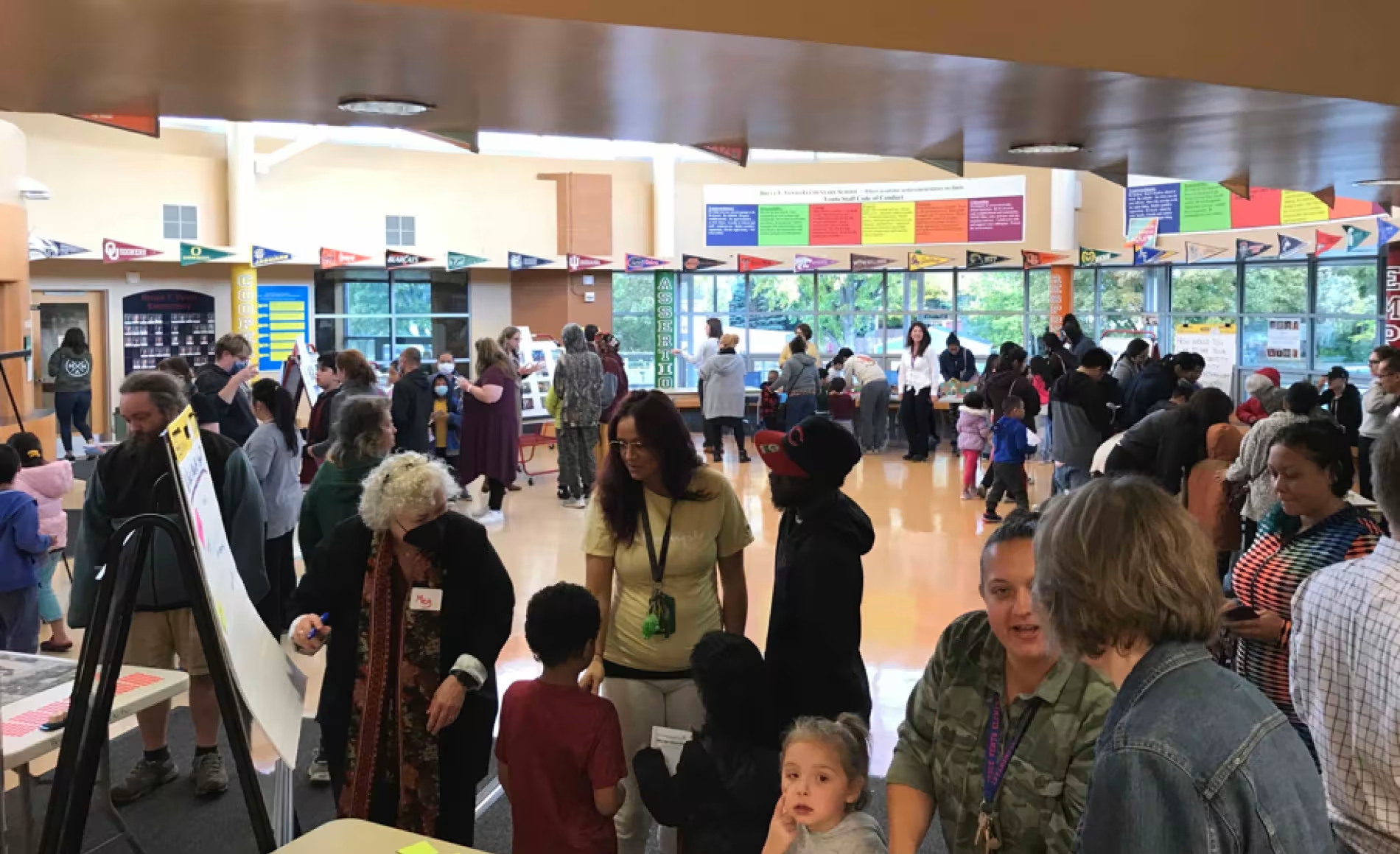
Community Background
Located in Saint Paul’s Payne-Phalen neighborhood, a primary and longstanding issue facing the Bruce Vento community is the generational impact of disinvestment spurred by heavy redlining in the 1960s. Other community challenges include increased mental health struggles, as well as general health challenges.
While conducting a feasibility study in 2017 to determine whether to remodel the existing space or build a new school entirely (and whether it was possible to keep the existing school open during construction), Cuningham learned that a portion of Bruce Vento’s students were coming to school with trauma. When these issues were intensified by the COVID-19 pandemic, it became clear that our approach to planning the new school needed to reframe regenerative design as a means to meet both the ecological and social well-being needs of students, teachers, and community members.
Workshop Details
Engaging an entire community to collect their diverse opinions can be a lengthy process. Doing so in a single day might seem impossible. At Bruce Vento, we did it in a single hour.
While three community info-gathering workshops would be the standard approach with a project of Bruce Vento’s scope, timing and logistics necessitated that we hold a single, one hour community workshop instead.
With over 100 members of the community in attendance, the Cuningham team relied on and pulled heavily from our 20+ years of experience with SPPS in order to maximize the time given. Because of these existing strong connections, not only was the workshop a success, it also pushed the boundaries of what a community workshop can be.
The goal was twofold: shape the development of the new school by understanding student and community priorities and create a regenerative design vision statement that focuses on broad, community needs, rather than specific design strategies.
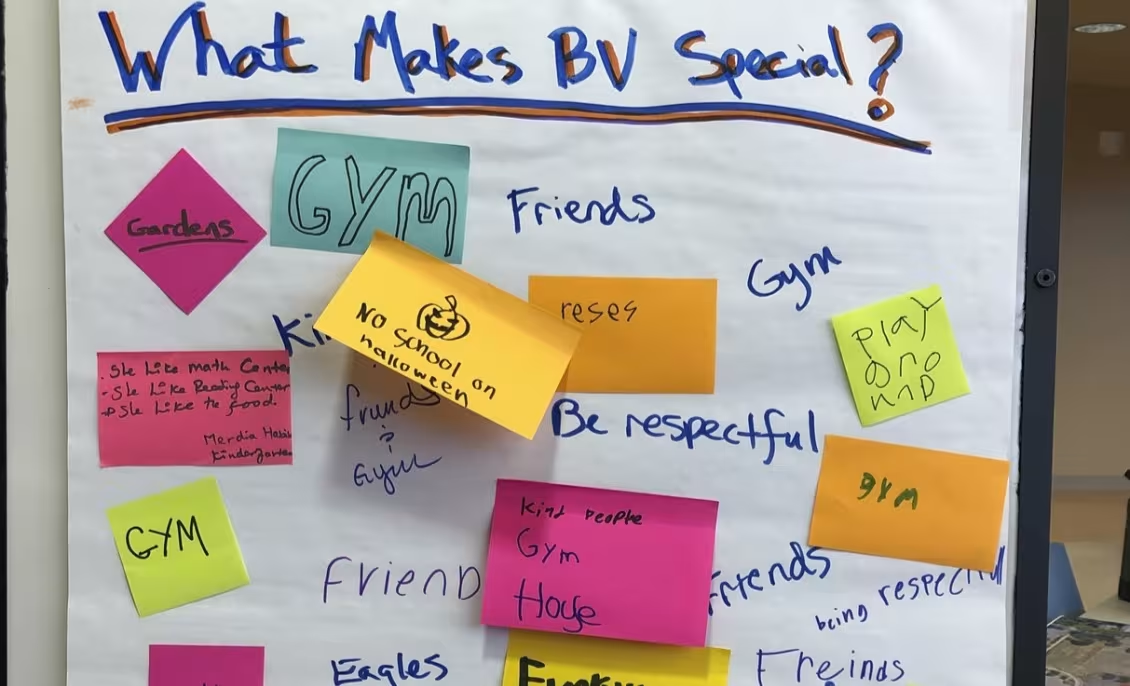
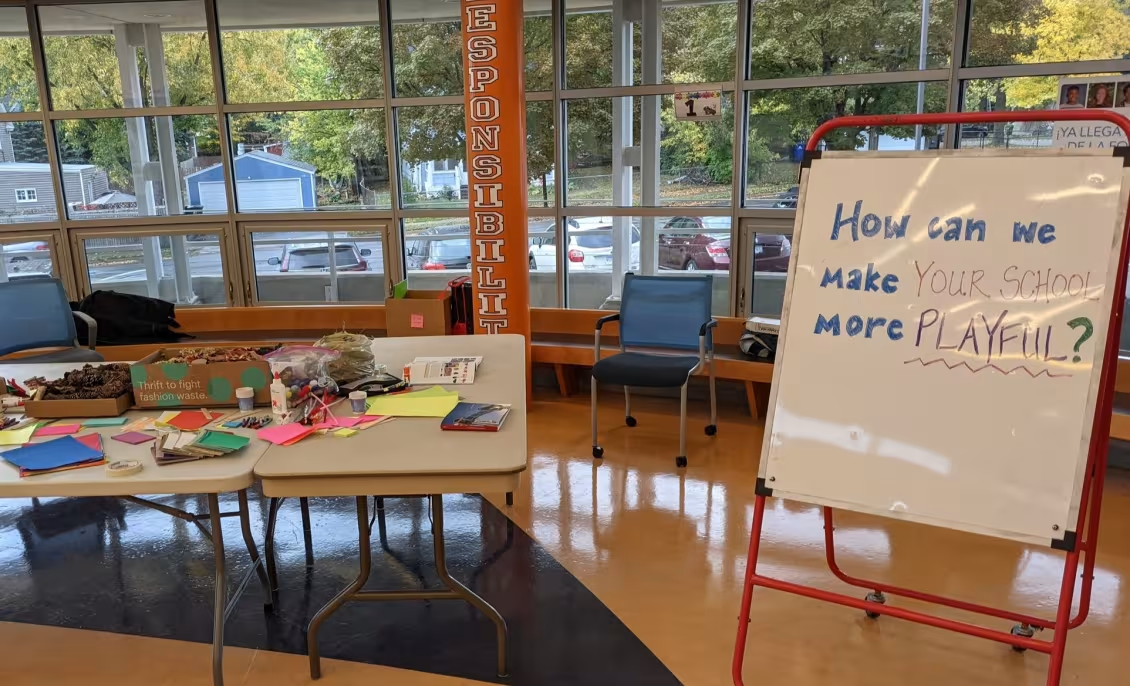
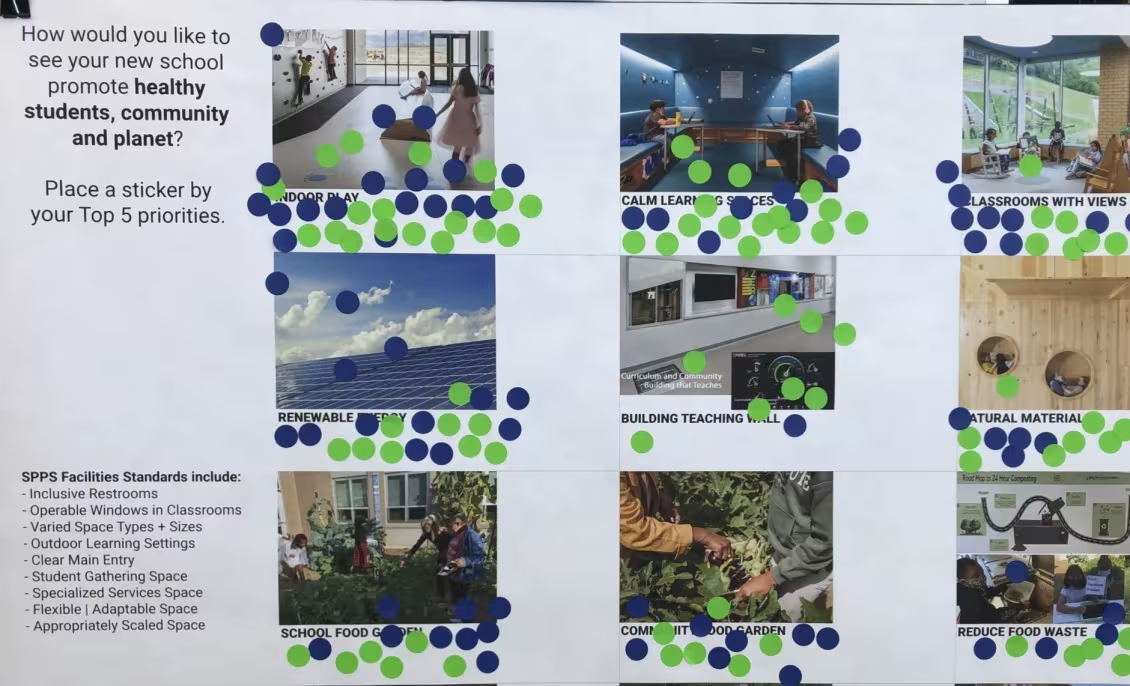
To collect data, we conducted six activities in a fair type setting, each centered around a fundamental question:
- Activity 1: What makes Bruce Vento special?
- Activity 2: Where do you feel special/like you belong?
- Activity 3: How would you like to see your culture, identity and community celebrated through art and story?
- Activity 4: How can we make your school more playful?
- Activity 5: How would you like to see your new school promote healthy students, community, and planet?
- Activity 6: What would make your school amazing?
Play, mental health and well-being, clean water, and clean air were consistent themes throughout the workshop, regardless of the platform in which the question was asked. And thus, the follow regenerative vision statement was borne:
"The design of the new Bruce Vento School will be rooted in play and nature in order to promote the overall health, well-being and empowerment of students, staff, and community."
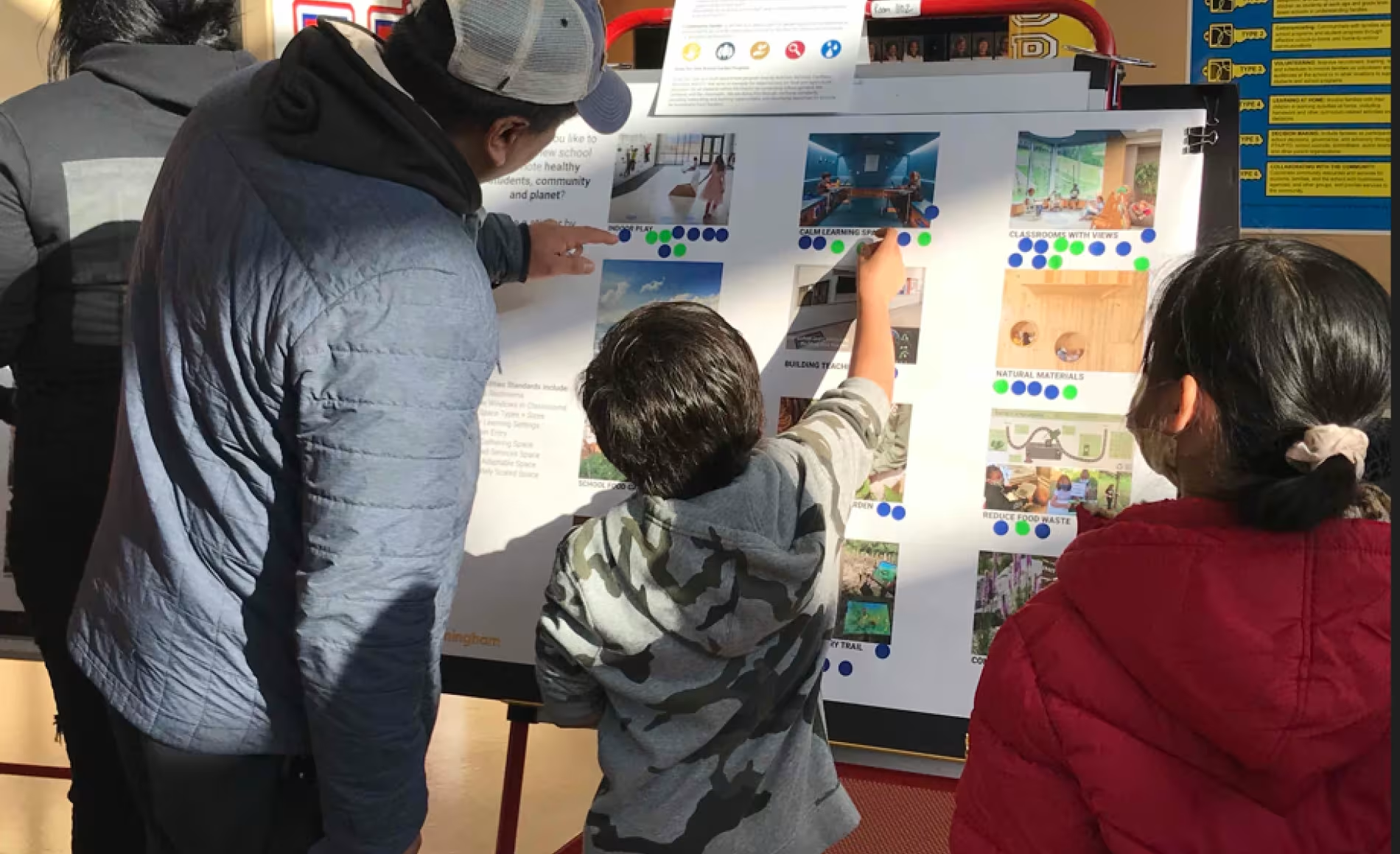
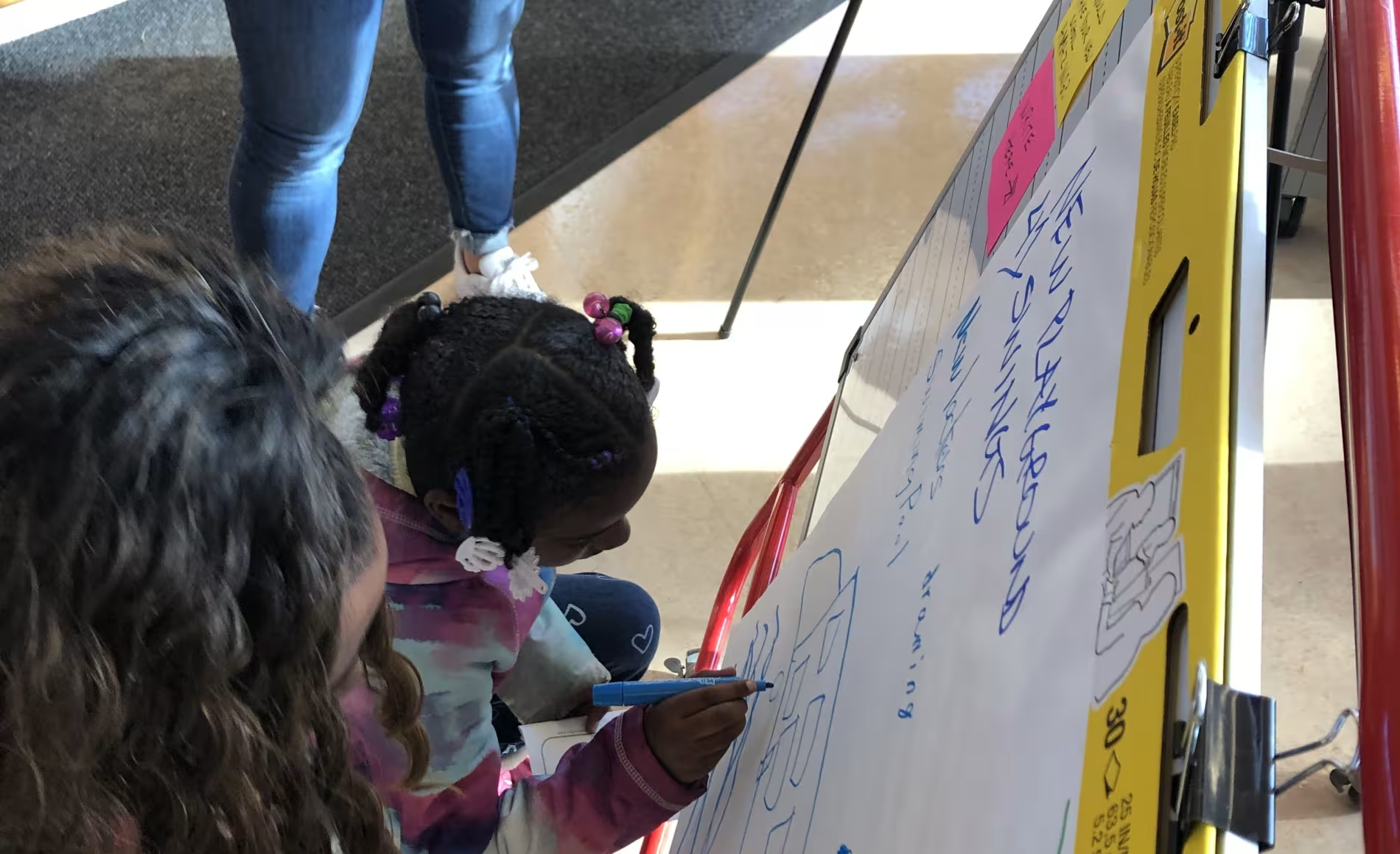
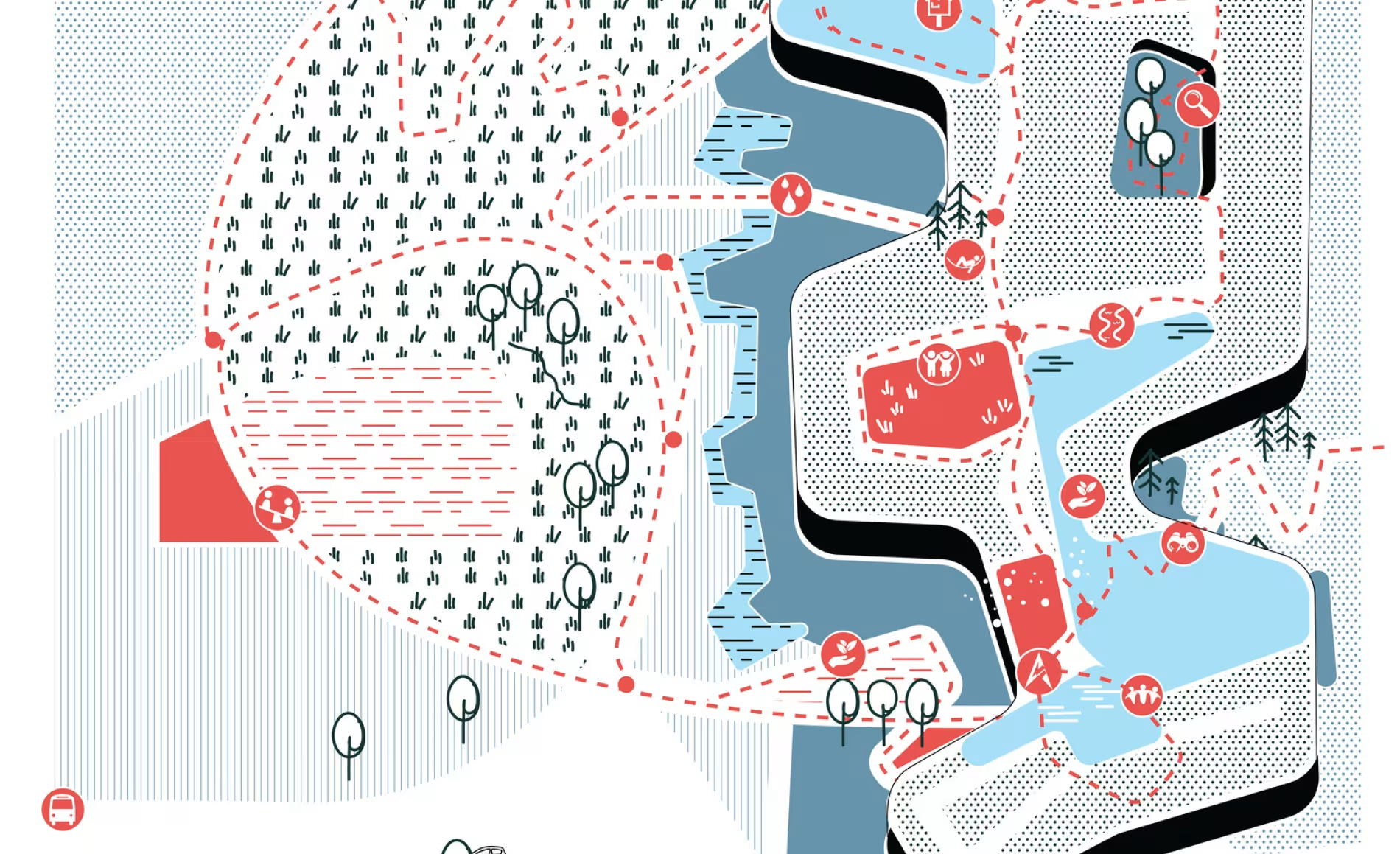
Translating a Vision into Design
The unique regenerative vision statement developed during the workshop has been crucial in creating design solutions that uniquely reflect the diverse voices of Bruce Vento’s students, teachers, and community members.
Given that play and nature were the most important values to the community, the new school is being designed around a “discovery trail” that flows through Bruce Vento’s landscape, connecting meadow, creek, gardens, woodlands and play spaces and creates opportunities for students to learn about habitat restoration and grow their own food. Students can also discover how water moves through the site, listen to the various sounds of the urban landscape, and observe daily and seasonal changes.
This trail transitions to the school’s interior, connecting interactive learning spaces like a sensory wall and indoor play area where students learn, play, move, and unwind. An inquiry courtyard provides easily accessible outdoor learning opportunities, while areas of respite along the trail give students a place to rest and recharge.
By seamlessly connecting indoor and outdoor spaces, Bruce Vento makes play, connection to nature, and discovery foundational to the educational experience.
